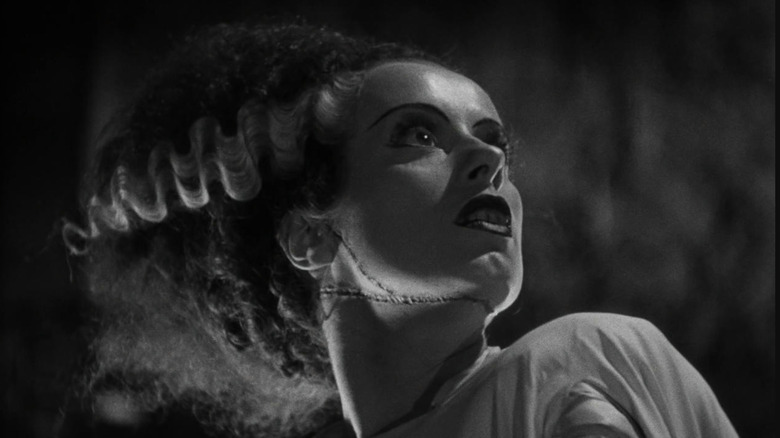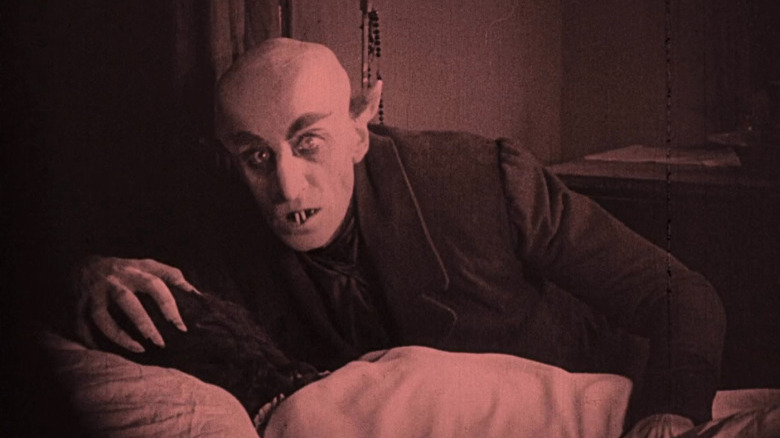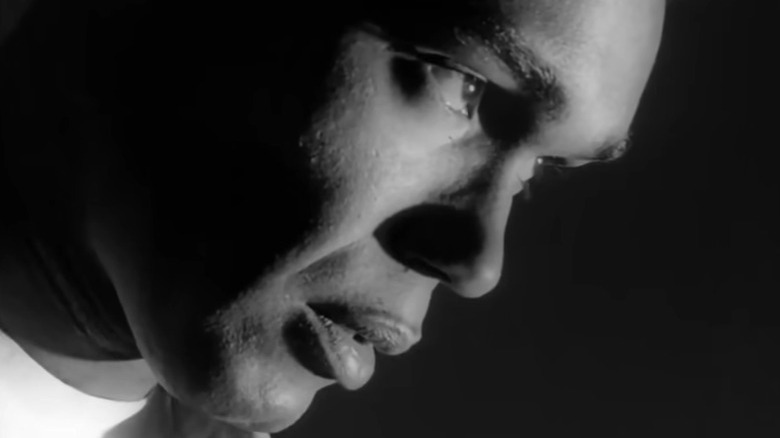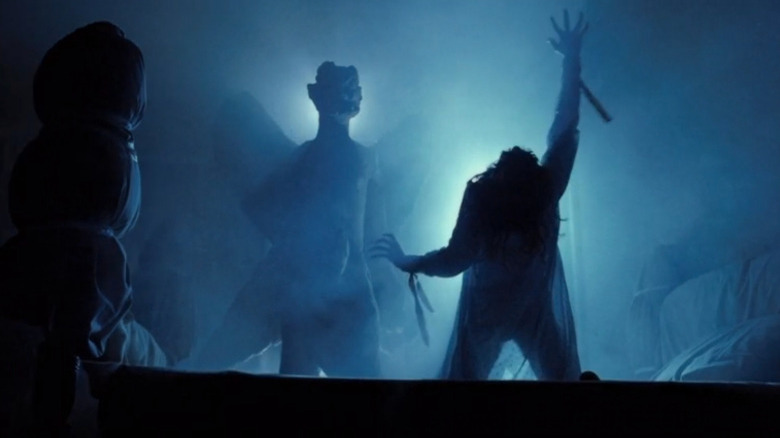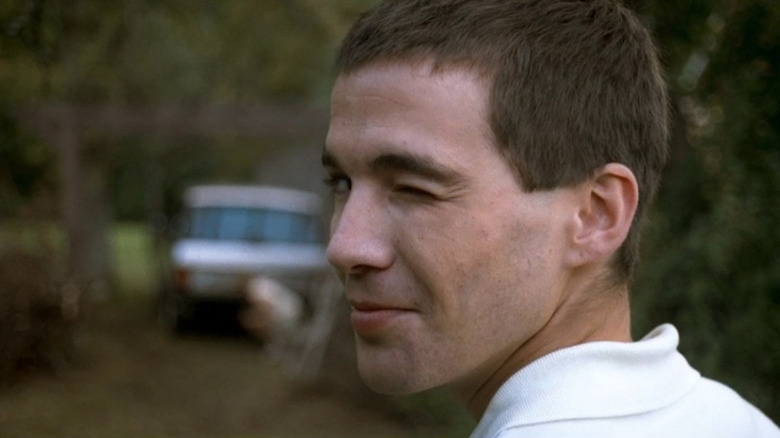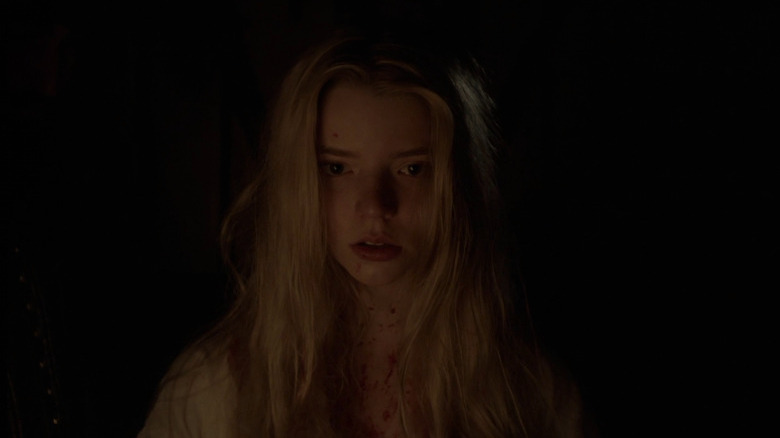Sight And Sound's List Leaves Off Some Of The Greatest Films In Horror History
Every decade — on the "twos" for some reason — Sight and Sound releases what may very well be the definitive list of the greatest movies ever made.
The organization asks film critics and filmmakers from all over the world, people who really know their stuff, to present their own lists of the ten greatest motion pictures in history. Those lists are tabulated and spun out into a mighty Top 100, giving movie lovers a chance to learn about a lot of amazing movies and consider the impact that history and cultural shifts in our collective opinions about movies have over time.
And as usual, we learned that critics and filmmakers over the world don't seem to like horror very much.
There are a handful of scary films on the Sight and Sound poll in 2022, but most are squarely in the realm of arthouse cinema, and could also be classified as dramas or thrillers if the voter was feeling snooty about it. "Psycho, "The Shining," and "Get Out" are almost inarguably horror movies but films like "Mulholland Drive" and "Night of the Hunter" occupy vaguer genre territory. Snobs could easily ignore their horror elements and still get a lot out of them.
So where are the great scary movies?
A lot of them are ready and waiting, that is if future voters feel like expanding their repertoires.
The silent, golden ages
As we move further away from the silent era, which occupied roughly a quarter of all of cinema history, fewer and fewer silent movies seem to get recognized by contemporary film lovers. But several horror films from the era are still among the best and most influential. Classics like "The Cabinet of Dr. Caligari" (1920) and "Nosferatu" (1922), in particular, have painted some of the most indelible images in the art form, and now arguably typify the German Expressionist movement which still influences filmmakers today. Two of the most important movies of all time, but not two of the 100 greatest, apparently. "Nosferatu" even got snubbed on its 100-year anniversary. Poor guy.
As the art form and industry expanded, and as sound added whole new avenues for terror, the genre continued to grow. James Whale's "Frankenstein" (1931) introduced one of cinema's most enduring creations, and his "Bride of Frankenstein" (1935) remains one of the most subversive mainstream studio films ever made, incorporating queer subtext and arguably sacrilegious elements that challenged convention, and still feels daring even today. Jacques Tourneur's "Cat People" (1942) — which is often credited with inventing the fake-out jump scare, aka the "Lewton Bus" — glaringly damns the xenophobia and sexism of American culture.
And if those films are too mainstream for Sight and Sound critics, they could always vote for artier fare like the surreal quasi-documentary "Häxan: Witchcraft Through the Ages" (1922), which explores the history of occult superstitions, or Carl Theodor Dryer's stunningly dreamlike "Vampyr" (1932), which gives even David Lynch's vaunted filmography a run for its money in the nightmare department.
Mid-20th century anxieties
The anxieties of our cultures evolve over time as new existential and practical threats alter our lives. Giant monster movies existed prior to Ishirō Honda's "Gojira" (1954), but set as it was against the aftermath of the atomic bomb, the devastation of a giant radioactive fire-breathing creature laying waste to Japan was incredibly potent. Not only did the film launch a still-massively popular international franchise, but the original has lost none of its impacts.
In America, anxieties over the so-called "Red Scare" led to sci-fi classics like Don Siegel's "Invasion of the Body Snatchers" (1956), a frightening allegory for insidious ideologies taking over the minds of our neighbors (which, sadly, still feels relevant). George A. Romero's "Night of the Living Dead" (1968) would throw working-class Americans into a pressure cooker while they fought wave after wave of flesh-eating ghouls. Romero's film not only spawned one of the most popular and lucrative horror subgenres but also concluded in a harrowing reminder that, when all is said and done, we cannot escape the horrors of a society that eagerly dehumanizes so many of its members (which again, is sadly still relevant).
Meanwhile, William Castle was breaking down the walls between the artist and the audience with interactive classics like "The Tingler" (1959), which released its title monster into the actual theater through the use of chairs equipped with electric buzzers. Herk Harvey's "Carnival of Souls" (1962), a film of rare ethereal power, miraculously sprang from the low-budget and rarely-appreciated realm of industrial cinema.
And then there's Robert Wise's perfectly titled "The Haunting" (1963), one of the most atmospheric movies ever crafted, Alfred Hitchcock's experimental and confounding "The Birds" (1963), and Georges Franju's arthouse shocker "Eyes Without a Face" (1960), as sad and disturbing as any film of its era.
The nightmarish 1970s
The 1970s are often considered a highlight in movie history, with filmmakers embracing the new possibilities that the recently-adopted rating system afforded them, to address themes and capture images that previously would have been forbidden by the restrictive "Production Code."
The 1970s provided a fantastic wave of smart, groundbreaking, and visceral horror classics. William Friedkin's blockbuster "The Exorcist" (1973) is more than just terrifying, it's a powerful exploration of modern secularism in collapse. Bob Clark's "Black Christmas" (1974) helped spawn the popular slasher genre, with a film about women fighting off a murderous stalker, whose evil becomes indistinguishable from the misogyny of a man trying to control a woman's decision to have to an abortion. As scary (and again, sadly still relevant) as can be.
Steven Spielberg's "Jaws" (1974) completely changed the motion picture landscape with the blockbuster release, but it's also a striking indictment of a capitalist system that willfully prioritizes economic security over the safety of human lives (again, sadly still relevant). Speaking of blockbusters, while some have argued that the cult horror-comedy musical "The Rocky Horror Picture Show" (1975) is "so bad it's good," the film's cultural influence is so overwhelming that it's literally still playing in theaters today. How can we deny the power of a film that almost literally jumps off the stage and inspires multigenerational cult-like devotion?
David Lynch may be well-represented on the Sight and Sound poll, but his initial surreal masterpiece "Eraserhead" (1977) didn't make the cut, despite its terrifyingly artful illustration of modern loneliness. Dario Argento's superlatively phantasmagorical "Suspiria" (1977) didn't make the list either. Even Ridley Scott's technical masterpiece "Alien" (1979), which combined modern anxieties of a heartless capitalist system, violent sexism, and the all-too-human discomfort with our own physiology, and gave cinema some of its most memorable moments.
Turn of the century scares
It's just getting ridiculous at this point, but there are still more horror classics that arguably deserved recognition. David Cronenberg's remake of the (already wonderful) "The Fly" (1986) is more than a classic monster movie, it's one of the most depressing and emotional films ever made about dying. Bernard Rose's "Candyman" (1992) takes the slasher genre and transforms its urban legend conceptualizations into an eye-opening treatise on the power of myth.
In the 1990s, several filmmakers artfully pulled back the camera to explore horror cinema as a construct, indicting the entertainment industry for exploiting and dulling the artistic value of the genre in "Wes Craven's New Nightmare" (1994) and indicting the audience itself for paying for these evils to be brought into the world, in Michael Haneke's "Funny Games" (1997).
Craven's metatextual approach to the horror genre would yield the even more wildly popular, but no less insightful "Scream" (1996), the first in a long series of films that would analyze not just the self-reflexive nature of the horror genre but also reveal its many misogynistic underpinnings, in front of and behind the camera. Takashi Miike's "Audition" (1999) would also disturbingly damn its protagonist for his manipulation of women, in ways too surprising to discuss, but so powerful we're literally arguing it deserves consideration for a list of the Top 100 movies of all time.
The new millennium of macabre
Critics are often hesitant to canonize films before history has had a chance to prove they have staying power, but the new Sight and Sound poll made exceptions for films like Jordan Peele's Oscar-winning social horror film "Get Out" (2017) and the similarly biting "Parasite" (2019), which may or may not be a horror film but is, in its themes and various events, often genuinely disturbing.
So maybe it's a little early to consider the other great horror films of the 21st century for a "Greatest Movies of All Time" list, but it's easy to imagine a near future where Robert Eggers' incredibly intricate and unsettling historical horror film "The Witch" finds a place among the best of the best. Time may also be kind to Ari Aster's feminist cult shocker "Midsommar" (2019) or Jennifer Kent's emotionally devastating and monstrous modern classic "The Babadook" (2014), but we'll just have to wait and see.
Then again, "wait and see" hasn't done wonders for the horror genre's inclusion on the Sight and Sound poll. As wonderful as pretty much all the films on the 2022 list are, they're missing many of the most enduring tales about one of humanity's most powerful emotions. Unless we start giving the horror genre its proper due, I fear the participants of the Sight and Sound poll may always ignore many of the most important and meaningful films in the medium. And that's pretty scary.
